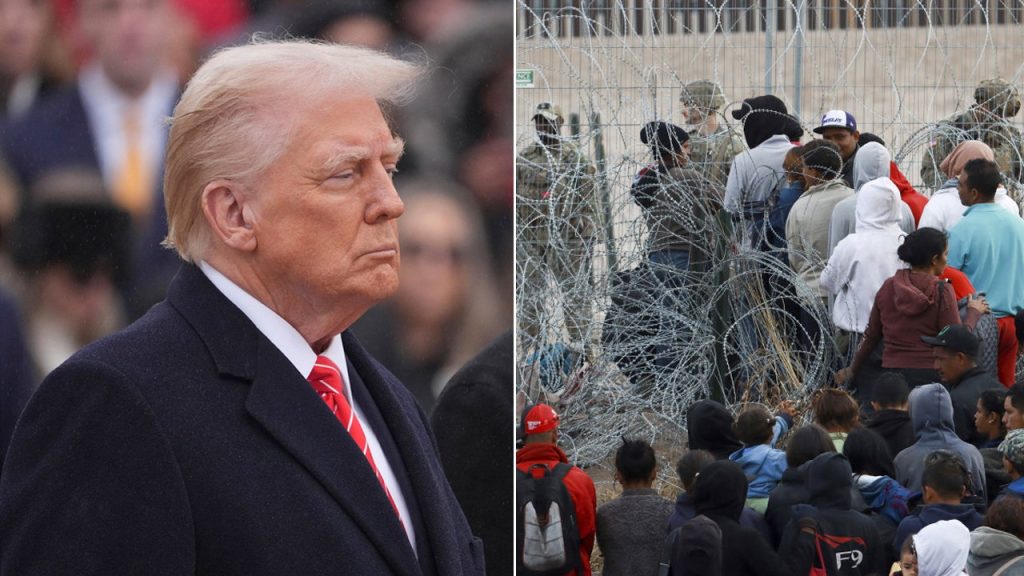The Department of Homeland Security (DHS), under Acting Secretary Benjamine Huffman, has declared an "actual or imminent mass influx" of illegal immigrants at the southern border, necessitating an immediate federal response. This declaration, valid for 60 days, unless extended, invokes a rarely used authority to request assistance from all 50 states in enforcing immigration laws. Huffman argues that the situation endangers the "lives, property, safety, or welfare of the residents" nationwide, justifying this unprecedented call for state and local law enforcement involvement in federal immigration duties. The move aims to deputize state and local officers to bolster border security and immigration enforcement, a strategy likely to encounter legal and political challenges.
Huffman’s justification rests on the sheer volume of illegal entries recorded over the past four years, exceeding eight million, with millions more evading detection. He cites recent figures, including 47,330 encounters at the southern border in a single month, with at least 6,920 releases. While acknowledging this represents a decrease from peak numbers seen during the Biden administration, such as the release of over 140,000 illegal immigrants in December 2022, Huffman emphasizes that any number of releases contravenes established immigration laws, which dictate detention for those not "clearly and beyond a doubt entitled to be admitted." He argues that the current situation incentivizes further illegal entries and strains enforcement agencies already facing detention capacity shortages.
The call for state and local assistance is highly controversial, with several states expected to resist the directive. California Attorney General Rob Bonta has already declared his opposition, citing Supreme Court precedent established in Printz v. United States that prevents the federal government from commandeering state resources for enforcing federal laws. Bonta insists that while the federal government can utilize its resources for immigration enforcement, it cannot compel state and local law enforcement agencies to perform federal immigration duties. This stance reflects a broader legal and political debate regarding the balance of power between federal and state governments in immigration matters.
The Las Vegas Metropolitan Police Department (LVMPD) further underscores the resistance, with Sheriff Kevin McMahill stating their limited cooperation with immigration authorities, citing other pressing local priorities. This highlights the practical challenges of enlisting local law enforcement, especially in jurisdictions with differing priorities and resource constraints. The potential conflict between federal mandates and local priorities underscores the complexity of the immigration enforcement landscape.
Further complicating the situation is the Justice Department’s concurrent move to investigate state and local officials who obstruct immigration enforcement. This parallel initiative creates a potential clash between federal and state authorities, as the DOJ seeks to ensure compliance with federal immigration laws while some states assert their right to prioritize local concerns. This adds another layer of legal and political tension to the already fraught debate surrounding immigration enforcement.
Huffman’s finding emphasizes the interconnectedness of border security and criminal activity. He argues that the influx of unvetted individuals increases the likelihood of criminal activity, including human trafficking, drug smuggling, and sexual assault. He points to the strain on immigration enforcement agencies, particularly regarding detention capacity, further exacerbating the challenge of managing the influx. This rationale links border security with national security concerns, attempting to justify the extraordinary measures being taken. The intersection of immigration enforcement, criminal justice, and resource allocation remains a central point of contention in the ongoing debate.

